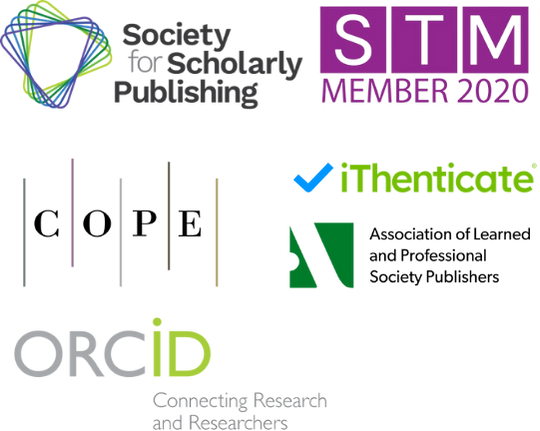Preliminary Structural Studies of the Kinetoplastida Target Enzyme and Foundation for Subsequent Studies
DOI:
https://doi.org/10.71222/xwzr0q07Keywords:
Kinetoplastida, enzyme structure, homology modeling, drug discovery, neglected tropical diseases, molecular docking, Trypanosoma, LeishmaniaAbstract
Kinetoplastida, a class of flagellated protists, includes several pathogenic genera responsible for neglected tropical diseases. These parasites rely on unique biochemical pathways, such as those involved in glycolysis, which are absent in their human hosts, making them attractive targets for selective drug development. This study presents a preliminary structural and functional analysis of a key target enzyme from Kinetoplastida, laying the foundation for further mechanistic studies and drug screening. Using a combination of homology modeling, molecular docking, and sequence alignment, we identify conserved active site residues and potential ligand binding regions. The results provide valuable insights for future structure-based drug design efforts aimed at treating Trypanosoma and Leishmania infections.
References
1. R. A. Schwartzman and J. A. Cidlowski, "Apoptosis: The biochemistry and molecular biology of programmed cell death," Endocr. Rev., vol. 14, no. 2, pp. 133–151, Apr. 1993, doi: 10.1210/edrv-14-2-133.
2. Z. Brener, "Biology of Trypanosoma cruzi," Annu. Rev. Microbiol., vol. 27, pp. 1–34, 1973, doi: 10.1146/annurev.mi.27.100173.002023.
3. J. J. van Hellemond, F. R. Opperdoes, and A. G. M. Tielens, "The extraordinary mitochondrion and unusual citric acid cycle in Trypanosoma brucei," Biochem. Soc. Trans., vol. 33, no. 5, pp. 967–971, 2005, doi: 10.1042/BST0330967.
4. M. Vouga and G. Greub, "Emerging bacterial pathogens: the past and beyond," Clin. Microbiol. Infect., vol. 22, no. 1, pp. 12–21, 2016, doi: 10.1016/j.cmi.2015.10.010.
5. F. Balloux and L. van Dorp, "Q&A: What are pathogens, and what have they done to and for us?," BMC Biol., vol. 15, pp. 1–6, 2017, doi: 10.1186/s12915-017-0433-z.
6. V. Hannaert, F. Bringaud, F. R. Opperdoes, and P. A. Michels, "Evolution of energy metabolism and its compartmentation in Kinetoplastida," Kinetoplastid Biol. Dis., vol. 2, pp. 1–30, 2003, doi: 10.1186/1475-9292-2-11.
7. P. S. Kessler and M. Parsons, "Probing the role of compartmentation of glycolysis in procyclic form Trypanosoma brucei: RNA interference studies of PEX14, hexokinase, and phosphofructokinase," J. Biol. Chem., vol. 280, no. 10, pp. 9030–9036, 2005, doi: 10.1074/jbc.M412033200.
8. S. Bauer and M. T. Morris, "Glycosome biogenesis in trypanosomes and the de novo dilemma," PLoS Negl. Trop. Dis., vol. 11, no. 4, p. e0005333, 2017, doi: 10.1371/journal.pntd.0005333.
9. P. A. Michels, "The glycosome of trypanosomes: properties and biogenesis of a microbody," Exp. Cell Res., vol. 181, no. 2, pp. 395–410, 1989, doi: 10.1016/0014-4894(89)90079-9.
10. D. Steverding, "Sleeping sickness and nagana disease caused by Trypanosoma brucei," in Arthropod Borne Diseases, Cham, Swit-zerland: Springer Int. Publ., 2016, pp. 277–297. ISBN: 9783319138831.
11. V. Hannaert, F. R. Opperdoes, and P. A. Michels, "Comparison and evolutionary analysis of the glycosomal glyceralde-hyde-3-phosphate dehydrogenase from different Kinetoplastida," J. Mol. Evol., vol. 47, pp. 728–738, 1998, doi: 10.1007/PL00006432.
12. E. Pays, M. Radwanska, and S. Magez, "The pathogenesis of African trypanosomiasis," Annu. Rev. Pathol. Mech. Dis., vol. 18, no. 1, pp. 19–45, 2023, doi: 10.1146/annurev-pathmechdis-031621-025153.
13. B. H. Mooers, "Shortcuts for faster image creation in PyMOL," Protein Sci., vol. 29, no. 1, pp. 268–276, 2020, doi: 10.1002/pro.3781.
14. C. P. Roster et al., "Enolase inhibitors as early lead therapeutics against Trypanosoma brucei," Pathogens, vol. 12, no. 11, p. 1290, 2023, doi: 10.3390/pathogens12111290.
15. A. A. Zuma, E. dos Santos Barrias, and W. de Souza, "Basic biology of Trypanosoma cruzi," Curr. Pharm. Des., vol. 27, no. 14, pp. 1671–1732, 2021, doi: 10.2174/1381612826999201203213527.
16. D. A. Maugeri, J. J. Cannata, and J. J. Cazzulo, "Glucose metabolism in Trypanosoma cruzi," Essays Biochem., vol. 51, pp. 15–30, 2011, doi: 10.1042/bse0510015.
17. F. R. Opperdoes and P. Borst, "Localization of nine glycolytic enzymes in a microbody-like organelle in Trypanosoma brucei: the glycosome," FEBS Lett., vol. 80, no. 2, pp. 360–364, 1977, doi: 10.1016/0014-5793(77)80476-6.
18. X. Barros-Alvarez et al., "Glycosomal targets for anti-trypanosomatid drug discovery," Curr. Med. Chem., vol. 21, no. 15, pp. 1679–1706, 2014. ISBN: 09298673.
19. A. C. Rufer, "Drug discovery for enzymes," Drug Discov. Today, vol. 26, no. 4, pp. 875–886, 2021, doi: 10.1016/j.drudis.2021.01.006.
20. S. C. Xie, L. R. Dick, A. Gould, S. Brand, and L. Tilley, "The proteasome as a target for protozoan parasites," Expert Opin. Ther. Targets, vol. 23, no. 11, pp. 903–914, 2019, doi: 10.1080/14728222.2019.1685981.
21. R. A. Copeland, Evaluation of Enzyme Inhibitors in Drug Discovery: A Guide for Medicinal Chemists and Pharmacologists. Hoboken, NJ, USA: John Wiley & Sons, 2013. ISBN: 9781118488133.
22. E. L. D’Antonio et al., "Structure-based approach to the identification of a novel group of selective glucosamine analogue inhibitors of Trypanosoma cruzi glucokinase," Mol. Biochem. Parasitol., vol. 204, no. 2, pp. 64–76, 2015, doi: 10.1016/j.molbiopara.2015.12.004.
23. M. Saxena and R. Dubey, "Target enzyme in Alzheimer’s disease: Acetylcholinesterase inhibitors," Curr. Top. Med. Chem., vol. 19, no. 4, pp. 264–275, 2019, doi: 10.2174/1568026619666190128125912.
24. C. M. Anderson, R. E. Stenkamp, and T. A. Steitz, "Sequencing a protein by X-ray crystallography: II. Refinement of yeast hexokinase B co-ordinates and sequence at 2.1 Å resolution," J. Mol. Biol., vol. 123, no. 1, pp. 15–33, 1978, doi: 10.1016/0022-2836(78)90374-1.
25. C. Jaiswal, K. K. Pant, R. K. S. Behera, R. Bhatt, and V. Chandra, "Development of new molecules through molecular docking," in Ind. Microbiol. Biotechnol.: Emerg. Concepts Microb. Technol., Singapore: Springer Nature Singapore, 2023, pp. 643–660, doi: 10.1007/978-981-99-2816-3_22.
26. H. Ju et al., "Iterative optimization and structure–activity relationship studies of oseltamivir amino derivatives as potent and selective neuraminidase inhibitors via targeting 150-cavity," J. Med. Chem., vol. 65, no. 17, pp. 11550–11573, 2022, doi: 10.1021/acs.jmedchem.1c01970.
27. F. Palazzesi and A. Pozzan, "Deep learning applied to ligand-based de novo drug design," in Artif. Intell. Drug Des., 2021, pp. 273–299. ISBN: 9781071617861.
28. V. K. Vyas, S. Bhati, S. Patel, and M. Ghate, "Structure-and ligand-based drug design methods for the modeling of antimalarial agents: A review of updates from 2012 onwards," J. Biomol. Struct. Dyn., vol. 40, no. 20, pp. 10481–10506, 2022, doi: 10.1080/07391102.2021.1932598.
29. G. M. Morris and M. Lim-Wilby, "Molecular docking," in Mol. Modeling Proteins, 2008, pp. 365–382. ISBN: 9781597451772.
30. D. Vemula, P. Jayasurya, V. Sushmitha, Y. N. Kumar, and V. Bhandari, "CADD, AI and ML in drug discovery: A comprehensive review," Eur. J. Pharm. Sci., vol. 181, p. 106324, 2023, doi: 10.1016/j.ejps.2022.106324.
31. I. Muegge, A. Bergner, and J. M. Kriegl, "Computer-aided drug design at Boehringer Ingelheim," J. Comput.-Aided Mol. Des., vol. 31, no. 3, pp. 275–285, 2017, doi: 10.1007/s10822-016-9975-3.
32. E. Saavedra, Z. González-Chávez, R. Moreno-Sánchez, and P. A. Michels, "Drug target selection for Trypanosoma cruzi metab-olism by metabolic control analysis and kinetic modeling," Curr. Med. Chem., vol. 26, no. 36, pp. 6652–6671, 2019, doi: 10.2174/0929867325666180917104242.
Downloads
Published
Issue
Section
License
Copyright (c) 2025 Ziyao Liu (Author)

This work is licensed under a Creative Commons Attribution 4.0 International License.


